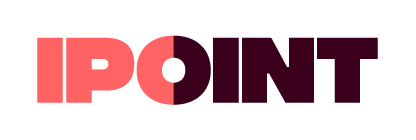In today’s automotive industry, compliance is a strategic necessity. From hazardous substance restrictions to end-of-life vehicle directives, manufacturers and suppliers face an increasingly dense network of global regulations. These rules span every corner of the product lifecycle and demand more than legal know-how: they require cross-functional collaboration, reliable data, and scalable digital solutions. As electrification and sustainability reshape the industry, robust automotive compliance management has become a key differentiator and a business-critical function.
Table of Contents
What Automotive Compliance Covers And Why It’s Growing in Complexity
Automotive compliance refers to the regulations, systems, and processes that govern vehicles and their components. It ensures that all products meet legal and market-specific requirements. While the concept may seem broad, its core lies in product, material, and environmental compliance – especially when managing complex supply chains.
Key regulatory frameworks include:
- REACH (Registration, Evaluation, Authorisation and Restriction of Chemicals):
Governs the use of chemicals in materials and products, with detailed reporting requirements for manufacturers and suppliers under the European Chemicals Agency (ECHA). Relevant for the entire automotive supply chain. - RoHS (Restriction of Hazardous Substances Directive):
Restricts hazardous substances in electrical and electronic equipment (EEE). In the automotive context, RoHS applies to standalone EEE (e.g., portable navigation devices) placed on the EU market but not to components integrated into type-approved vehicles. For in-vehicle electronics, ELV Directive Annex II and OEM-specific substance restrictions typically apply. - ELV Directive (End-of-Life Vehicles Directive):
A cornerstone of environmental compliance in the automotive sector. It ensures that vehicles at the end of their life cycle can be dismantled, recycled, or recovered efficiently. Associated requirements include RRR targets — Reusability, Recyclability and Recoverability — as defined in ISO 22628 and relevant VDA guidelines. - California Proposition 65:
Requires businesses to provide warnings about significant exposures to chemicals that cause cancer, birth defects, or other reproductive harm. While not automotive-specific, Prop 65 applies across industries and becomes relevant when automotive or aftermarket products are sold in California. - SVHC (Substances of Very High Concern) and GADSL (Global Automotive Declarable Substance List):
Both define substances that require declaration — but with different scopes. SVHCs are defined by ECHA under REACH and must be tracked if present >0.1% w/w. GADSL, maintained by the automotive industry, includes additional OEM-relevant substances not necessarily listed as SVHCs (e.g., lead in solder >0.3%). Reporting often takes place via IMDS (International Material Data System).
Compliance also includes responsible sourcing obligations, particularly with regard to conflict minerals and labor rights – critical issues in global automotive manufacturing.
As regulations evolve and expectations around transparency rise, managing compliance effectively has become both a legal requirement and a strategic priority for automotive companies.

Who Sets the Rules? Key Players in Automotive Compliance
The web of automotive regulatory compliance is shaped by a diverse set of actors across global, national, and industry levels.
- Government agencies like the U.S. National Highway Traffic Safety Administration (NHTSA), the European Commission, or Chinese Ministry of Industry and Information Technology (MIIT) issue and enforce legal requirements.
- Standards bodies such as the International Organization for Standardization (ISO), SAE International (Society of Automotive Engineers), and the United Nations Economic Commission for Europe (UNECE) define technical norms that often form the basis for legislation or industry adoption.
- Industry consortia, including the Automotive Industry Action Group (AIAG) and the German Association of the Automotive Industry (VDA), provide best practices and collaborative frameworks for automotive companies and suppliers.
Challenges in Automotive Compliance
Meeting regulatory obligations sounds straightforward – until you try to do it at scale. From data fragmentation to shifting legislation, automotive compliance is full of moving parts that demand constant attention.- Inconsistent supplier data: Material declarations come in different formats, from different systems, at different times. This fragmentation makes it hard to consolidate clean, audit-ready data across the full automotive supply chain.
- Regulations keep shifting: REACH, RoHS, ELV, SVHC updates – compliance teams must track and interpret changes across multiple jurisdictions. Without a system to keep pace, even compliant products can fall out of line.
- Manual work drains time and trust: Spreadsheets, copy-paste routines, and email threads dominate the compliance workflow. Errors are inevitable and often costly. For many automotive companies, this process is no longer sustainable.
- Limited visibility into sub-tiers: Most suppliers have little insight beyond their direct partners. That’s risky. Hidden non-compliant substances can threaten certification, market access, and brand reputation.
- Complexity grows with sustainability demands: Electrification, recyclability, and digital product passports raise the bar. Meeting these goals requires structured, scalable systems.

How Technology Enables Smarter Compliance
Digital transformation is changing how the automotive industry approaches compliance. Instead of reacting to risks, companies can now anticipate them, if the right technologies are in place.
- IMDS and Catena-X as data exchange hubs: Platforms like IMDS and Catena-X standardize how compliance data is shared between OEMs and suppliers, improving consistency, speed, and control.
- Simulation tools predict risk scenarios: Digital twins and simulation models allow companies to test product configurations against evolving regulations, well before physical production begins.
- Blockchain strengthens traceability: For high-risk materials, blockchain supports transparency across the automotive supply chain – especially in conflict minerals reporting and battery passport use cases.
- Smart analytics unlock proactive compliance: AI-powered dashboards and analytics help teams detect anomalies, monitor supplier behavior, and prioritize interventions where risk is highest.
- Automated reporting saves time: With regulatory disclosures becoming more frequent and more complex, automated reporting tools reduce manual workload and increase audit readiness.
What’s New: IMDS 15 and Product Carbon Footprint (PCF) Reporting
The release of IMDS 15 marks a significant evolution in automotive compliance management. It introduces enhanced support for multi-material components, better alignment with the REACH Candidate List, and extended capabilities for reporting recycled content.
Even more transformative: upcoming Product Carbon Footprint (PCF) reporting will be integrated into IMDS workflows in line with the Catena-X PCF Rulebook. This will enable OEMs and suppliers to submit CO₂-related data alongside material declarations, paving the way for climate-relevant insights at the part level. As sustainability regulations tighten, combining material compliance and emission data within a single exchange platform like IMDS will become essential for holistic compliance and sustainability in the automotive industry.
Best Practices for Staying Compliant
Even the most advanced software can’t replace strategy. Successful compliance programs combine the right tools with cross-functional commitment, clear processes, and continuous learning.
| Best Practice |
Why It Matters |
| Leadership support | Ensures compliance is prioritized as part of corporate governance. |
| Cross-functional teamwork | Connects engineering, sourcing, legal, and ESG efforts to one shared compliance goal. |
| Supplier engagement | Drives transparency and consistency across the automotive supply chain. |
| Risk-based focus | Allocates resources where the regulatory exposure is highest. |
| Continuous training | Keeps teams up to date with evolving laws and platforms like IMDS. |
| Internal and external audits |
Identify gaps early and strengthen trust with partners and authorities. |
Smart Compliance with IPOINT
IPOINTsupports the full spectrum of the automotive industry – from multinational OEMs to agile Tier 2 and Tier 3 suppliers. Our platform helps companies manage complex regulatory obligations with confidence, while scaling effortlessly to meet specific needs.
Whether you require full-system integration or need to simplify IMDS submissions, IPOINT adapts to your compliance maturity, business size, and supply chain complexity.
| For OEMs |
For Suppliers |
| Centralized compliance tracking across vehicle programs | Streamlined IMDS-ready reporting without the manual effort |
| Deep integration with PLM, ERP, and custom systems | Pre-configured templates for REACH, RoHS, and ELV |
| Insights into supplier risk, compliance status, and trends | Easy onboarding, version control, and audit support |
| Readiness for Digital Product Passport (DPP), ESG, and battery regulations | Scalable entry points for small teams with limited resources |
IPOINT Solutions: Built for OEMs and Suppliers Alike
Whether you're managing hundreds of suppliers or submitting declarations for a handful of parts – iPoint offers the flexibility, automation, and guidance to stay compliant and competitive.
Frequently Asked Questions
What does automotive compliance cover?
Automotive compliance includes all regulations that govern materials, substances, and environmental performance – from REACH and RoHS to ELV and RRR principles. It ensures that vehicles and components meet legal, safety, and sustainability standards. Key areas include product and material compliance, recyclability, and responsible sourcing.
Why is managing compliance in the automotive industry so complex?
Automotive supply chains are global, multi-tiered, and often fragmented. Gathering accurate, validated data across different formats and systems is challenging. On top of that, regulations change frequently, and documentation requirements like IMDS or REACH add further complexity.
Is IPOINT’s platform suitable for small suppliers?
Yes. We offer modular, easy-to-use tools that fit different compliance maturity levels. Even smaller suppliers benefit from automation, guided workflows, and templates without needing a full IT setup. The platform scales with your needs and resources.







